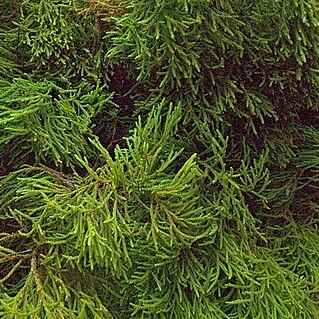Trees or shrubs evergreen, dioecious. Leaves usually dimorphic: juvenile leaves spreading, not 2-ranked, linear to needlelike or subulate, rarely falcately curved; adult leaves crowded, normally appressed, scalelike or subulate, 2-5 mm, hard, base decurrent apex often incurved. Pollen cones terminal or axillary, solitary, sessile; pollen 2-saccate. Seed-bearing structures terminal, usually solitary, small, composed of several bracts normally only 1 fertile; sterile bracts not fleshy (sometimes becoming fleshy and brightly colored at maturity); ovule 1, borne abaxially on middle part of fertile bract, initially partly inverted, becoming more erect at maturity. Epimatium only partly enveloping seed and less than 1/3 its length, forming a somewhat membranous, asymmetric, cupular sheath around its base. Seed maturing in 1st year, suberect or ± inclined.
Plants dioec., rarely monoec. Male strobili terminal, rarely axillary, subtended by basal scales; sporophylls densely imbricate, bisporangiate, apiculus prominent. Female branchlets terminal or subapical. Carpidia one to several, free, with solitary ovules. Epimatium affixed to ovule at base only, otherwise free, well-developed, covering the immature inverted ovule, which later erects. Rarely the nutlike seed remains inverted and included in the hardened epimatium, the integument remaining membr., but always free from epimatium. Lvs dimorphic; of juveniles and reversion shoots about linear, of adults small, scalelike. Shrubs or trees. Spp. about 20--Malaysia, New Caledonia, Tasmania, N.Z. One sp. In Chile. The N.Z. spp. are endemic.

